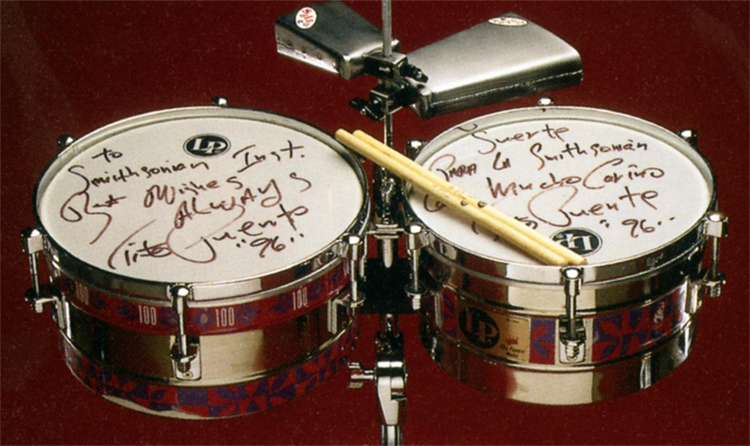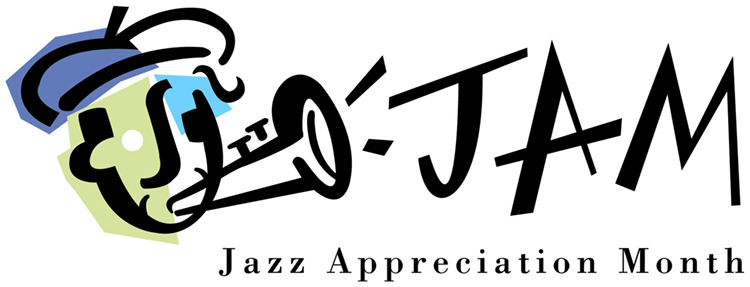Tito Puente, at left on the timbales, performs at California’s Monterey Jazz Festival in 1977. Credit: © Jon Sievert, Michael Ochs Archives/Getty Images
In our next installment for Jazz Appreciation Month (JAM), World Book celebrates the birthday of music legend Tito Puente. Puente was born on April 20, 1923, in New York City. He ranks among the most important figures in the history of Latin popular music. Puente was an influential bandleader, composer, arranger, and musician. A percussionist, he played jazz “with a Latin touch,” as well as the popular dance music salsa. But Puente was best known as the “King of Mambo” for his influence in popularizing that form of Caribbean music.
Puente recorded 118 albums and won 5 Grammy Awards. His Dance Mania (1958) became one of the most popular Latin albums in music history. His favorite percussion instruments were timbales (shallow single-head drums) and the vibraphone, but he played a variety of drums as well as the clarinet, piano, and saxophone. Puente captivated audiences with his vibrant and wild performances on stage.

Tito Puente’s autographed timbales are displayed at the Smithsonian Institution’s National Museum of American History. Credit: Smithsonian National Museum of American History/Kenneth E. Behring Center
Puente was “born in rhythm” (as he liked to say) in El Barrio, the Spanish section of Harlem in New York City. His full name was Ernest Antony Puente, Jr. Both of his parents were from Puerto Rico. Tito was a “busy” youngster whose restless hands were often heard banging on pots and pans. To get him out of the house, his mother sent him to piano lessons. Tito soon switched to drums, and in his early teens, he formed a music act with his sister, Anna. By 1940, his talents were polished enough to join the famous Latin orchestra Machito and His Afro-Cubans. Puente then served three years in the U.S. Navy during World War II (1939-1945). He saw combat aboard the aircraft carrier USS Santee, but he also learned jazz while playing in the ship’s band.

JAM – Jazz Appreciation Month Credit: Smithsonian National Museum of American History
After the war, Puente studied at New York City’s famous Julliard School of Music. He formed his first band in 1949. Expanding to form the Tito Puente Orchestra, the group rapidly gained popularity. During the 1950’s, Puente began recording with such leading artists as salsa singer Celia Cruz, bandleader Woody Herman, and pianist George Shearing. In the 1960’s, he was a regular performer at the Palladium Ballroom in Manhattan. In the 1970’s, he starred in the Salsa Meets Jazz series at Manhattan’s Village Gate nightclub. His prolific career never slowed, giving 200 to 300 performances well into his 70's.
Puente plays himself in the popular film The Mambo Kings (1992), and he is featured in the documentary Calle 54, (2000) a portrait of Latin jazz artists performing at Sony Music Studios on 54th Street in Manhattan. Puente played his last show in San Juan, Puerto Rico, just a week before his death at age 77 on May 31, 2000.
Untitled Document Can't view the linked articles? Subscribe to World Book Online

World Book Online delivers a progressive sequence of core databases supported by supplemental
tools, such as language translation, graphic organizers, and unique Webquests. Moving from
Early World of Learning to World Book Advanced, World Book Online aligns end-users with their
appropriate learning levels. Each stand-alone site provides additional features to support the
needs of users’ specific capabilities.
The World Book Difference
World Book combines cutting-edge technology with traditional editorial excellence to produce
authoritative, trustworthy, and unbiased content. The digital content is updated in real time and
carefully curated for each learning level. Accessible 24/7, the content is available on a variety of devices.
World Book Online combines 21st-century instructional techniques with timely information.
By breaking down complex topics and using easily understandable text, World Book Online helps to
build fluency and increase comprehension. Featuring single sign-on capability, these sites are paired
with highly visual content to engage even the most reluctant reader. Our collection of resources kindles
a lifelong learning experience for every user. This adherence to clarity, currency, and accuracy makes
World Book’s digital offerings an information hub for the classroom, library, and beyond.
|